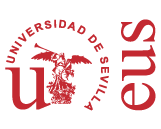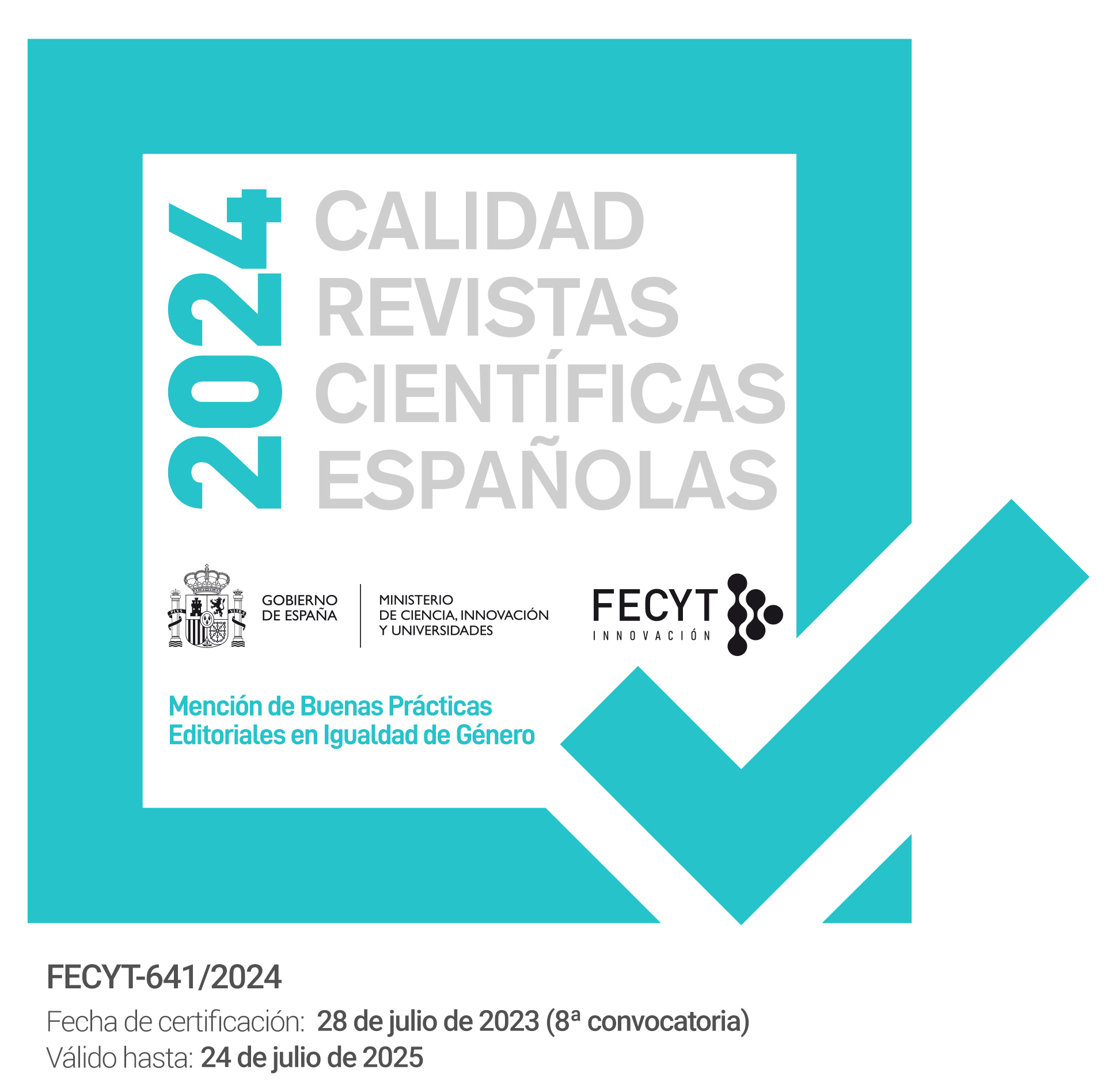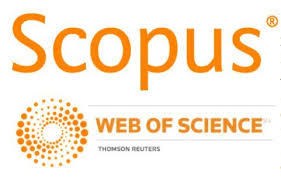Social networks and interlanguage development in the acquisition of related languages
DOI:
https://doi.org/10.12795/PH.2022.v36.i01.08Keywords:
social network, vocabulary acquisition, Italian FL, error analysis, FacebookAbstract
The research presented in this article concerns the potential of social networks in a foreign language acquisition process. This study, which was carried out in a university context, aims at verifying if the use of social networks can have positive effects on students’ motivation, participation and involvement and if it reduces lexical errors in the target language. In order to test the initial hypotheses, we analysed and compared the lexical contents in the corpora generated by the comments made to 21 Facebook posts by two groups of participants: an experimental one (that had used the social network during the course) and a control one (that had never used any). The results show a decrease in lexical errors in the group that had used Facebook and this must be related to the specific dynamics of the social networks, which encourage cooperation, participation and motivation and, therefore, reveal their considerable potential in education.
Downloads
Metrics
No metrics found.
Referencias bibliográficas
Akbari, E., Pilot, A., e Simons, P. (2015). Autonomy, competence, and relatedness in foreign language learning through Facebook. Computers in Human Behaviour, 48, 126-134. https://dl.acm.org/doi/10.1016/j.chb.2015.01.036
Akhiar, A., Mydin, A., e Adi Kasuma, S. (2017). Students’ perceptions and attitudes towards the use of Instagram in English language writing. Malaysian Journal Of Learning And Instruction, 47-72. https://doi.org/10.32890/mjli.2017.7796
Alfonzetti, G. (2010). Commutazione di codice. https://www.treccani.it/enciclopedia/commutazione-di-codice_(Enciclopedia-dell’Italiano)/
Bafile, L. (2010). Adattamento. https://www.treccani.it/enciclopedia/adattamento_%28Enciclopedia-dell%27Italiano%29/.
Bailini, S. (2016). La interlingua de lenguas afines. El español de los italianos, el italiano de los españoles. Led.
Bax, S. (2011). Normalisation revisited: The effective use of technology in language Education. International Journal of Computer Assisted Language Learning and Teaching, 1(2), 1–15.
Berruto, G. (2009). Confini tra sistemi, fenomenologia del contatto linguistico e modelli di code switching. In Iannaccaro G., e Matera V. (A cura di), La lingua come cultura (pp. 3-34). UTET – De Agostini.
Biber, D. (1995). Dimensions of register variation. A cross-linguistic comparison. Cambridge University Press.
Bolognesi, M. (2012). Il lessico mentale bilingue: i legami semantici e quelli episodici. Studi di glottodidattica, 5(1), 64-71. https://doi.org/10.15162/1970-1861/140
Bozanta, A., e Mardikyan, S. (2017). The effects of social media use on collaborative learning: a case of Turkey. Turkish Online Journal of Distance Education, 18(1), 96-110. https://doi.org/10.17718/tojde.285719
Bruner, J. (1997). La cultura dell’educazione. Feltrinelli.
Bybee, J. (2008). Usage-based grammar and second language acquisition. In P. Robinson., e N. C. Ellis (Eds.), Handbook of cognitive linguistics and second language acquisition. Routledge, 216-236.
Calvi, M. V. (1995). Didattica di lingue affini. Spagnolo e italiano. Guerini.
Calvi, M. V. (2003). Lingüística contrastiva de español e italiano. Mots Palabras Words, 4, 17-34. https://www.ledonline.it/mpw/allegati/mpw0403calvi.pdf
Calvi, M. V. (2004). Apprendimento del lessico di lingue affini. Cuadernos de Filología Italiana, 11, 61-71. https://revistas.ucm.es/index.php/CFIT/article/view/CFIT0404110061A
Cardenas-Claros, M.S., e Isharyanti, N. (2009). Code-switching and code-mixing in Internet chatting: between ‘yes’, ‘ya’, and ‘si’-a case study. The JALT CALL Journal, 5(3), 67–78. https://doi.org/10.29140/jaltcall.v5n3.87
Çetinkaya, L., e Sütçü, S. S. (2018). The effects of Facebook and WhatsApp on success in English vocabulary instruction. Journal of Computer Assisted Learning, 34(5), 504-514. https://doi.org/10.1111/jcal.12255
Chen, Y. (2015). Linking learning styles and learning on mobile Facebook. International Review of Research in Open and Distributed Learning, 16(2), 94–114. http://dx.doi.org/10.19173/irrodl.v16i2.2038
Chini, M. (2005). Che cos’è la linguistica acquisizionale. Carocci.
Cognigni, E., e Garbarino, S. (2018). Costruire la resilienza nell’interazione in un progetto di ricerca internazionale plurilingue. Il caso del progetto MIRIADI. In Coonan, C. M., Bier, A., e Ballarin, E. (A cura di), La didattica delle lingue nel nuovo millennio. Le sfide dell’internazionalizzazione (pp. 645-661). Edizioni Ca’Foscari.
Consiglio d‟Europa (2002). Quadro comune europeo di riferimento per le lingue: apprendimento insegnamento valutazione. La Nuova Italia-Oxford.
Corder, S. P. (1981). Error Analysis and Interlanguage. Oxford University Press.
Corrà, L. (2016). Sviluppo della Competenza lessicale. Aracne Editrice.
Dal Negro, S., e Ciccolone, S. (2018). Incidenza ed estensione del code-mixing come variabile sociolinguistica. Rivista Italiana di Dialettologia. XLII (42). Pendragon.
Ekahitanond, V. (2018). The impact of feedback in Facebook on students’ language proficiency. TEM Journal, 7(3), 686-692. https://dx.doi.org/10.18421/TEM73-28
Ellis, N. C. (2005). At the interface: Dynamic interactions of explicit and implicit language knowledge. Studies in Second Language Acquisition, 27, 305–352.
Fernández López, S. (1997). Interlengua y análisis de errores en el aprendizaje del español como lengua extranjera. Edelsa Grupo Didascalia.
Ferreira Cabrera, A., e Elejalde Gómez, J. (2020). Propuesta de una taxonomía etiológica para etiquetar errores de interlengua en el contexto de un corpus escrito de aprendientes de ELE. Forma y Función, 33(1), 115-146. http://dx.doi.org/10.15446/fyf.v33n1.84182
Gabarrón Pérez, A., Pino Rodríguez, A. M., Salvadores Merino, C., e Trujillo Sáez, F. (2020). Tecnología para la Enseñanza y el Aprendizaje de Lenguas Extranjeras. La Enseñanza de lenguas Asistida por Ordenador. Pasado, presente y futuro. Pragmalingüística, 28, 238-254. https://doi.org/10.25267/Pragmalinguistica.2020.i28.12.
Harting, A. (2017). Using Facebook to improve L2 German students’ socio-pragmatic skills. The EuroCALL Review, 25(1), 26-35. http://dx.doi.org/10.4995/eurocall.2017.7014
Hortigüela, A. D., Sánchez, S. J., Ángel Pérez, P. A., e Víctor Abella G. V. (2019). Social networks to promote motivation and learning in higher education from the students’ perspective. Innovations in Education and Teaching International, 56(4), 412-422. https://doi.org/10.1080/14703297.2019.1579665
Keller, G. H. (2016). Code switching in Teaching English to Speakers of Other Languages. Master’s Projects and Capstones, 480. https://repository.usfca.edu/capstone/480
Klimova, B., e Pikhart, M. (2020). Cognitive and Applied Linguistics Aspects of Using Social Media: The Impact of the Use of Facebook on Developing Writing Skills in Learning English as a Foreign Language. European Journal of Investigation in Health, Psychology and Education, 10(1), 110-118. http://dx.doi.org/10.3390/ejihpe10010010
Koch, P., e Öesterreicher, W. (1985). Sprache der Nähe – Sprache der Distanz. Mündlichkeit und Schriftlichkeit im Spannungsfeld von Sprachtheorie und Sprachgeschichte. Romanistisches Jahrbuch, 36, 15-43. De Gruyter.
Koch, P., e Österreicher, W. (1990) Gesprochene Sprache in der Romania: Französisch, Italienisch, Spanisch. Romanistische Arbeitshefte, 31. De Gruyter.
Kukulska-Hulme, A. (2015). Language as a bridge Connecting Formal and informal language learning through Mobile devices. In L. H. Wong., M. Milrad., e M. Specht (Eds.), Seamless Learning in the Age of Mobile Connectivity (pp. 281-294). Springer.
Kustati, M. (2014). An analysis of code-mixing and code-switching in EFL teaching of cross-cultural communication context. Al-Ta’lim, 21(3), 174-182. http://dx.doi.org/10.15548/jt.v21i3.101
Lantz-Andersson, A. (2017). Language play in a second language: social media as contexts for emerging sociopragmatic competence. Education and Information Technologies, 23(2), 705-724. https://link.springer.com/article/10.1007/s10639-017-9631-0
Laufer, B. (1997). The lexical plight in second language reading. Words you don’t know, words you think you know, and words you can’t guess. In J. Coady., e T. Huckin (Eds.), Second Language Vocabulary Acquisition. A Rationale for Pedagogy (pp. 20-34). Cambridge University Press.
López Serena, A. (2021). El hablar y lo oral. In Loureda, O., e Schrott, A. (Eds.), Manual de lingüística del hablar (pp.243-260). De Gruyter.
Martin, J., Jiménez González, M. I., Fernández Barrera, A. e Duée Zoghbi, C. (Eds.) (2019). Tecnología Integrada en la Didáctica de Lenguas Extranjeras (TIDLE). Ministerio de Educación y Formación Profesional y Universidad de Castilla-La Mancha. https://n9.cl/ru16
Martos Ramos, J. J., e Trapassi, L. (2020). Fomentar la autonomía en el aprendizaje de segundas lenguas: diario del proyecto APLA en la US. Philologia Hispalensis, 34(1), 79–97. https://doi.org/10.12795/PH.2020.v34.i01.05
McLoughlin, C., e Lee, M. (2008). The three P´s of Pedagogy for the networked Society: Personalization, Participation and Productivity. International Journal of Teaching and Learning in Higher Education, 20(1), 10-27. https://www.isetl.org/ijtlhe/pdf/IJTLHE395.pdf
Muysken, P. (2000). Bilingual speech: A typology of code-mixing. Cambridge University Press.
Norris, C. A., e Soloway, E. (2011). Learning and schooling in the age of mobiles. Educational Technology, 51(6), 3-12.
Palermo, M. (2010). Interferenza. https://www.treccani.it/enciclopedia/interferenza_%28Enciclopedia-dell%27Italiano%29/
— (2018). Organizzare il discorso in rete. Caratteristiche della testualità digitale. In G. Patota., e F. Rossi (A cura di), L’italiano e la rete, le reti per l’italiano (pp. 49-63). Accademia della Crusca-go Ware.
Pallotti, G. (2013). L’interlingua. https://interlingua.comune.re.it/wp-content/uploads/2013/07/interlingua_intro.pdf.
Peeters, W. (2019). The peer interaction process on Facebook: a social network analysis of learners’ online conversations. Educational Information Technology, 24, 3177-3204. https://link.springer.com/article/10.1007/s10639-019-09914-2
Pichiassi M. (2012), Modelli teorici sull’apprendimento di una L2. Università per stranieri di Perugia.
Pistolesi, E. (2018). Storia, lingua e varietà della Comunicazione Mediata dal Computer. In G. Patota., e F. Rossi (A cura di), L’italiano e la rete, le reti per l’italiano (pp. 16-34). Accademia della Crusca-go Aware.
Rainer, F. (2014). L’ibridismo greco-latino nell’italiano ottocentesco e le sue origini neolatine. In P. Danler., e C. Konecny (A cura di), Dall’architettura della lingua italiana all’architettura linguistica dell’Italia. Saggi in omaggio a Heidi Siller-Runggaldier (pp. 131-143). Peter Lang.
Read, J. (2000). Assessing vocabulary. Cambridge University Press.
Regis, R. (2006). Sulle realizzazioni dell’ibridismo. Studi italiani di linguistica teorica e applicata, 35(3), 471-504.
— (2016). Contributo alla definizione del concetto di ibridismo: aspetti strutturali e sociolinguistici. In V. Orioles., e R. Bombi (A cura di), XLVIII Congresso Internazionale di studi della Società di Linguistica Italiana (pp.215-230). Bulzoni.
Reinhardt J. (2020). Metaphors for social media-enhanced foreign language teaching and learning. Foreign Language Annals, 53, 234–242. https://doi.org/10.1111/flan.12462
— (2019). Social media in second and foreign language teaching and learning: Blogs, wikis, and social networking. Language Teaching, 52(1), 1-39. http://dx.doi.org/10.1017/S0261444818000356
Santoveña-Casal, S. e Bernal-Bravo, C. (2019). Exploring the influence of the teacher: Social participation on Twitter and academic perception. Comunicar, 58, 75-84. https://doi.org/10.3916/C58-2019-07
Savoia L. M. (2010). Prestiti lessicali e code-mixing nei sistemi arbëreshë. In Prantera N., Mendicino, A., e Citraro, C. (A cura di), Parole. Il lessico come strumento per organizzare e trasmettere gli etnosaperi (pp. 717-738). Università della Calabria.
Selinker, L. (1972). Interlanguage. International Review of Applied Linguistics, 10, 209-231. http://dx.doi.org/10.1515/iral.1972.10.1-4.209
Shen, L., e Shen, R. (2008). The pervasive learning platform of a Shanghai online college: A large-scale testbed for hybrid learning. In J. Fong., R. Kwan., F. L. Wang (Eds.), Hybrid Learning and Education, First International Conference (pp. 178-189). Springer.
Siemens, G. (2005). Connectivism: A learning theory for the digital Age. International Journal of Instructional Technology and Distance Learning, 2(1), 1-8. https://itdl.org/Journal/Jan_05/article01.htm
Smith, E. E. (2016). “A real double-edged sword:” Undergraduate perceptions of social media in their learning. Computers e Education, Volume 103, 44-58. https://doi.org/10.1016/j.compedu.2016.09.009
Tur, G., e Marín, V. I. (2015). Enhancing learning with the social media: student teachers’ perceptions on Twitter in a debate activity. Journal Of New Approaches In Educational Research, 4(1), 46-53. http://dx.doi.org/10.7821/naer.2015.1.102
Villarini, A. (2020) (A cura di), Insegnare l’italiano con i MOOC. Pacini Editore.
Vygotsky, L.S. (1978). Mind in Society. The Development of Higher Psychological Processes. Harvard University Press.
— (1980). Il processo cognitivo. Bollati Boringhieri.
— (1986). Thought and Language. Massachusetts Institute of Technology.
Wilkins, D. A. (1972). Linguistics in language teaching. Arnold.
Williams, C. (2011). Research methods. Journal of Business e Economics Research, 5(3), 65-72. https://doi.org/10.19030/jber.v5i3.2532
Published
How to Cite
Issue
Section
License
Copyright (c) 2022 Fabrizio Ruggeri

This work is licensed under a Creative Commons Attribution-NoDerivatives 4.0 International License.
The printed and electronic editions of this Journal are edited by the University of Seville Editorial, and the source must be cited in any partial or total reproduction.
Unless otherwise indicated, all the contents of the electronic edition are distributed under a license of use and distribution “Attribution-NonCommercial-NoDerivatives 4.0 International” . You can view the informative version and the legal text of the license here. This fact must be expressly stated in this way when necessary.
Authors who publish in this journal accept the following conditions:
- The author/s retain copyright and grant the journal the first publication right, and accept it to be distributed with the Creative Commons By NC ND 4.0 licence, which allows third parties to use what is published whenever they mention the authorship of the work and the first publication in this journal and whenever they do not make commercial use and reuse it in the same way.
- Authors can make other independent and additional contractual agreements for the non-exclusive distribution of the article published in this journal (e.g., include it in an institutional repository or publish it in a book) provided they clearly indicate that the work was published for the first time in this journal.
Authors are allowed and recommended, once the article has been published in the journal Philologia Hispalensis (online version), to download the corresponding PDF and disseminate it online (ResearchGate, Academia.edu, etc.) as it may lead to productive scientific exchanges and to a greater and faster dissemination of published work (see The Effect of Open Access).
Accepted 2022-01-18
Published 2022-12-12
- Abstract 508
- PDF (Español (España)) 200
- HTML (Español (España)) 226
- XML (Español (España)) 90













